Aluminum and Nickel Matrix Composites Reinforced by CNTs: Dispersion/Mixture by Ultrasonication
Abstract
:1. Introduction
2. Materials and Methods
2.1. Materials
2.2. Production of Nanocomposites
2.3. Nanocomposites Characterization
2.3.1. Microstructural Characterization
2.3.2. Mechanical Characterization
3. Results and Discussion
3.1. Microstructural Characterization of Nanocomposites
3.2. Mechanical Characterization of Nanocomposites
4. Conclusions
Acknowledgments
Author Contributions
Conflicts of Interest
References
- Kainer, K.U. Custom-made materials for automative and aerospace engineering. In Metal Matrix Nanocomposites; WILLEY-VCH Verlag GmbH & Co. KGaA: Weinheim, Germany, 2006; pp. 1–48. [Google Scholar]
- Shirvanimoghaddam, K.; Hamim, S.U.; Akbari, M.K.; Fakhrhoseini, S.M.; Pakseresht, A.H.; Ghasali, E.; Zabet, M.; Munir, K.S.; Jia, S.; Davim, J.P.; et al. Carbon fiber reinforced metal matrix composites: Fabrication processes and properties. Compos. Part A 2017, 92, 70–96. [Google Scholar] [CrossRef]
- Casati, R.; Vedani, M. Metal matrix composites reinforced by nano-particles-A review. Metals 2014, 4, 65–83. [Google Scholar] [CrossRef]
- Zhang, Z.; Chen, D.L. Contribution of Orowan strengthening effect in particulate-reinforced metal matrix nanocomposites. Mater. Sci. Eng. A 2008, 483–484, 148–152. [Google Scholar] [CrossRef]
- Zhang, Z.; Chen, D.L. Consideration of Orowan strengthening effect in particulate-reinforced metal matrix nanocomposites: A model for predicting their yield strength. Scr. Mater. 2006, 54, 1321–1326. [Google Scholar] [CrossRef]
- Mansoor, M.; Shahid, M. Carbon-nanotube-reinforced aluminum composite by induction melting. J. Appl. Res. Technol. 2016, 14, 215–225. [Google Scholar] [CrossRef]
- Ostovan, F.; Matori, K.A.; Toozandehjani, M.; Oskoueian, A.; Yusoff, H.M.; Yunjus, R.; Ariff, A.H.M. Nanomechanical behavior of multi-walled carbon nanotubes particulate reinforced aluminum nanocomposites prepared by ball milling. Materials 2016, 9, 140. [Google Scholar] [CrossRef]
- Jeon, Y.S.; Byun, J.Y.; Oh, T.S. Electrodeposition and mechanical properties of Ni-carbon nanotube nanocomposite coatings. J. Phys. Chem. Solids 2008, 69, 1391–1394. [Google Scholar] [CrossRef]
- Suárez, S.; Soldera, F.; Oliver, C.G.; Acevedo, D.; Mucklich, F. Thermomechanical behavior of bulk Ni/MWNT composites produced via powder metallurgy. Adv. Eng. Mater. 2012, 14, 499–502. [Google Scholar] [CrossRef]
- Kim, B.J.; Oh, S.Y.; Yun, H.S.; Ki, J.H.; Kim, C.J.; Baik, S.; Lim, B.S. Synthesis of Cu-CNT nanocomposite powder by ball milling. J. Nanosci. Nanotechnol. 2009, 9, 7393–7397. [Google Scholar] [CrossRef] [PubMed]
- Bor, A.; Ichinkhorloo, B.; Uyanga, B.; Lee, J.; Choi, H. Cu/CNT nanocomposite fabrication with different raw material properties using a planetary ball milling process. Powder Technol. 2016. In Press. [Google Scholar] [CrossRef]
- Li, S.; Sun, B.; Imai, H.; Mimoto, T.; Kondoh, K. Powder metallurgy titanium metal matrix composites reinforced with carbon nanotubes and graphite. Compos. Part A 2013, 48, 57–66. [Google Scholar] [CrossRef]
- Goh, C.S.; Wei, J.; Lee, L.C.; Gupta, M. Ductility improvement and fatigue studies in Mg-CNT nanocomposites. Compos. Sci. Technol. 2008, 68, 1432–1439. [Google Scholar] [CrossRef]
- Han, G.Q.; Du, W.B.; Wang, Z.H.; Liu, K.; Li, S.B.; Du, X. Effective dispersion of CNTs to fabricate CNT/Mg nanocomposites. Mater. Sci. Forum 2015, 816, 470–475. [Google Scholar] [CrossRef]
- Lei, X.; Natsuki, T.; Shi, J.; Ni, Q.Q. Analysis of carbon nanotubes on the mechanical properties at atomic scale. J. Nanomater. 2011, 2011, 805313. [Google Scholar] [CrossRef]
- Demczyk, B.G.; Wang, Y.M.; Cumings, J.; Hetman, M.; Han, W.; Zettl, A.; Ritchie, R.O. Direct mechanical measurement of the tensile strength and elastic modulus of multiwalled carbon nanotubes. Mater. Sci. Eng. A Struct. 2002, 334, 173–178. [Google Scholar] [CrossRef]
- Pérez-Bustamante, R.; Estrada-Guel, I.; Antúnez-Flores, L.; Miki-Yoshida, M.; Ferreira, P.J.; Martínez-Sánchez, R. Novel Al-matrix nanocomposites reinforced with multi-walled carbon nanotubes. J. Alloys Compd. 2008, 450, 323–326. [Google Scholar] [CrossRef]
- Kuzumaki, T.; Miyazawa, K.; Ichinose, H.; Ito, K. Processing of carbon nanotube reinforced aluminum composite. J. Mater. Res. 1998, 13, 2445–2449. [Google Scholar] [CrossRef]
- Xu, C.L.; Wei, B.Q.; Ma, R.Z.; Liang, J.; Ma, X.K.; Wu, D.H. Fabrication of aluminum–carbon nanotube composites and their electrical properties. Carbon 1999, 37, 855–858. [Google Scholar] [CrossRef]
- Deng, C.; Zhang, X.; Ma, Y.; Wang, D. Fabrication of aluminum matrix composite reinforced with carbon nanotubes. Rare Metals 2007, 26, 450–455. [Google Scholar] [CrossRef]
- Kwon, H.; Leparoux, M. Hot extruded carbon nanotube reinforced aluminum matrix composite materials. Nanotechnology 2012, 23, 415701. [Google Scholar] [CrossRef] [PubMed]
- Kwon, H.; Park Dae, H.; Silvain Jean, F.; Kawasak, A. Investigation of carbon nanotube reinforced aluminum matrix composite materials. Compos. Sci. Technol. 2010, 70, 546–550. [Google Scholar] [CrossRef]
- Laha, T.; Chen, Y.; Lahiri, D.; Agarwal, A. Tensile properties of carbon nanotube reinforced aluminum nanocomposite fabricated by plasma spray forming. Compos. Part A 2009, 40, 589–594. [Google Scholar] [CrossRef]
- Nguyen, J.; Holland, T.B.; Wen, H.; Fraga, M.; Mukherjee, A.; Lavernia, E. Mechanical behavior of ultrafine-grained Ni–carbon nanotube composite. J. Mater. Sci. 2014, 49, 2070–2077. [Google Scholar] [CrossRef]
- Kim, S.K.; Oh, T.S. Electrodeposition behavior and characteristics of Ni-carbon nanotube composite coatings. Trans. Nonferr. Metal Soc. 2011, 21, s68–s72. [Google Scholar] [CrossRef]
- Arai, S.; Saito, T.; Endo, M. Cu-MWCNT composite films fabricated by electrodeposition. J. Electrochem. Soc. 2010, 157, D147–D153. [Google Scholar] [CrossRef]
- Smart, S.K.; Ren, W.C.; Cheng, H.M.; Lu, G.Q.; Martin, D.J. Shortened double-walled carbon nanotubes by high-energy ball milling. Int. J. Nanotechnol. 2007, 4, 618–633. [Google Scholar] [CrossRef]
- Simões, S.; Viana, F.; Vieira, M.F. Carbon Nanotubes and their Nanocomposites. In Nanomaterials and Nanocomposites-Zero- to Three-Dimensional Materials and Their Composites; Wiley-VCH Verlag GmbH: Weinheim, Germany, 2016; pp. 75–101. [Google Scholar]
- Simões, S.; Viana, F.; Reis, M.A.L.; Vieira, M.F. Improved dispersion of carbon nanotubes in aluminum composites. Compos. Struct. 2014, 108, 992–1000. [Google Scholar] [CrossRef]
- Simões, S.; Viana, F.; Reis, M.A.L.; Vieira, M.F. Influence of dispersion/mixture time on mechanical properties of Al-CNTs nanocomposites. Compos. Struct. 2015, 126, 114–122. [Google Scholar] [CrossRef]
- Simões, S.; Viana, F.; Reis, M.A.L.; Vieira, M.F. Microstructural characterization of aluminum-carbon nanotube nanocomposites produced using different dispersion methods. Microsc. Microanal. 2016, 22, 725–732. [Google Scholar] [CrossRef] [PubMed]
- Chen, B.; Li, S.; Imai, H.; Jia, L.; Umeda, J.; Takahashi, M.; Kondoh, K. An approach for homogeneous carbon nanotube dispersion in Al matrix composites. Mater. Des. 2015, 72, 1–8. [Google Scholar] [CrossRef]
- Chen, B.; Shen, J.; Ye, X.; Imai, H.; Umeda, J.; Takahashi, M.; Kondoh, K. Solid-state interfacial reaction and load transfer efficiency in carbon nanotubes (CNTs)-reinforced aluminum matrix composites. Carbon 2017, 114, 198–208. [Google Scholar] [CrossRef]
- Suárez, S.; Lasserre, F.; Mucklich, F. Mechanical properties of MWNT/Ni bulk composites: Influence of the microstructural refinement on the hardness. Mater. Sci. Eng. A Struct. 2013, 587, 381–386. [Google Scholar] [CrossRef]
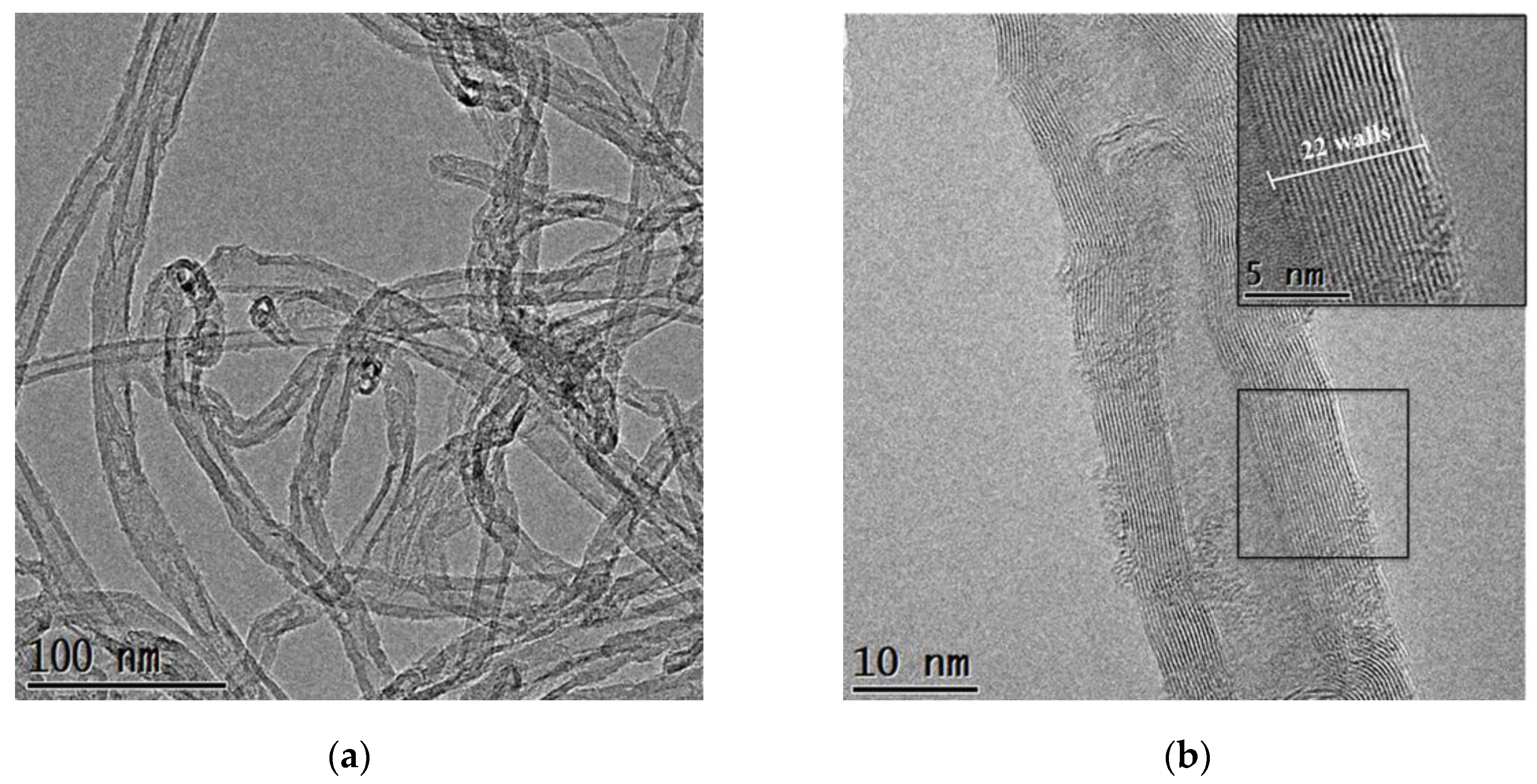
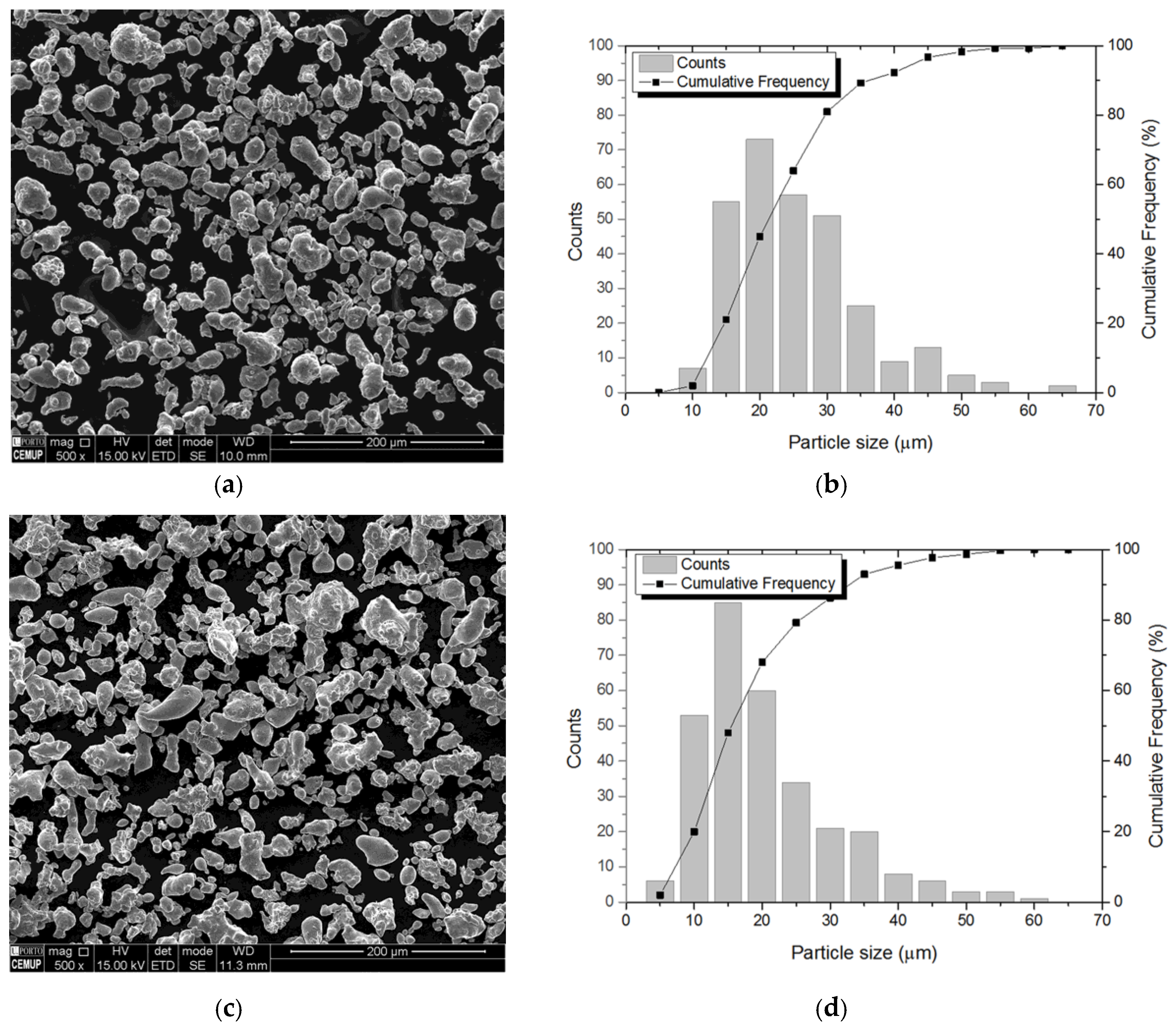

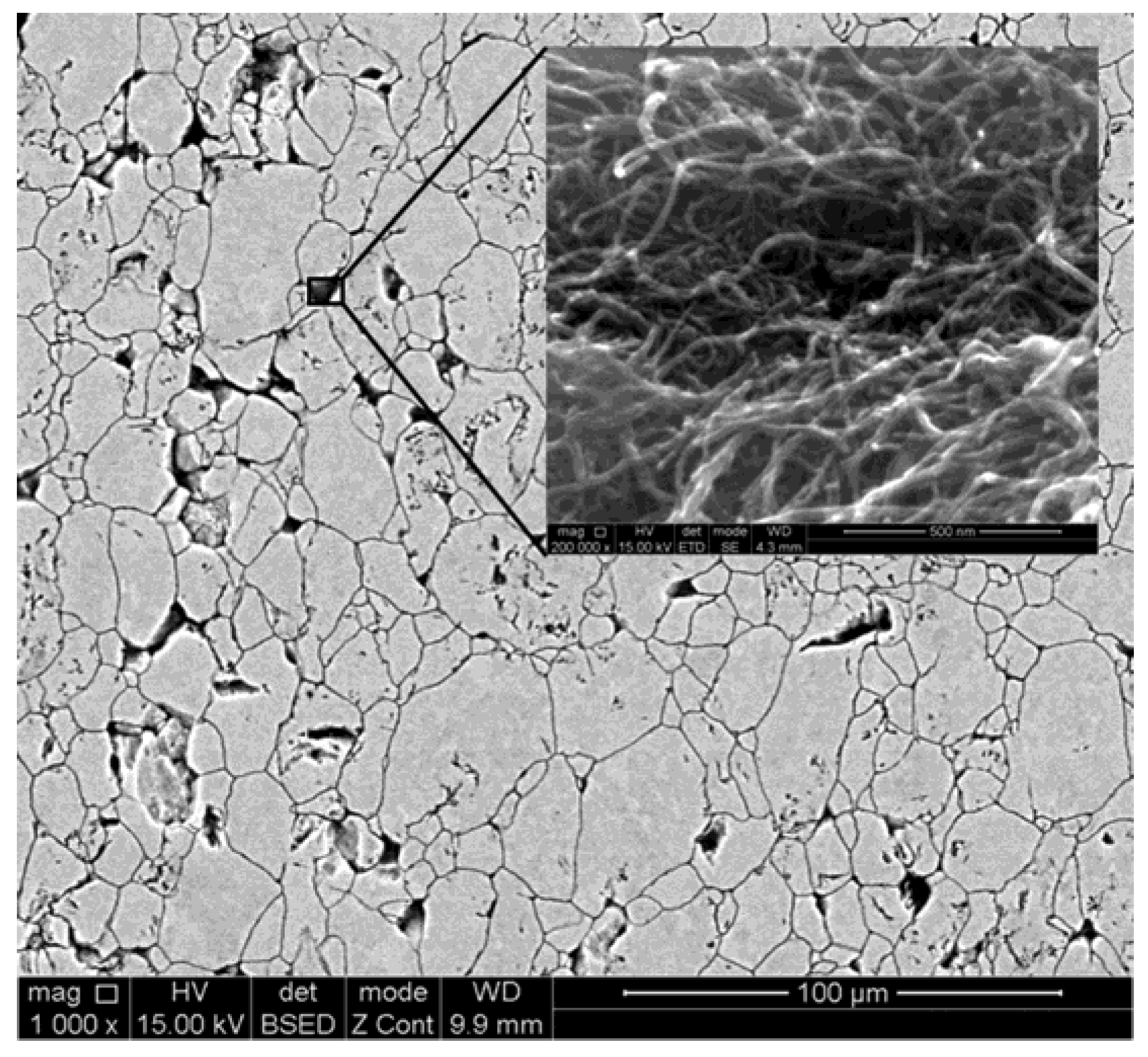
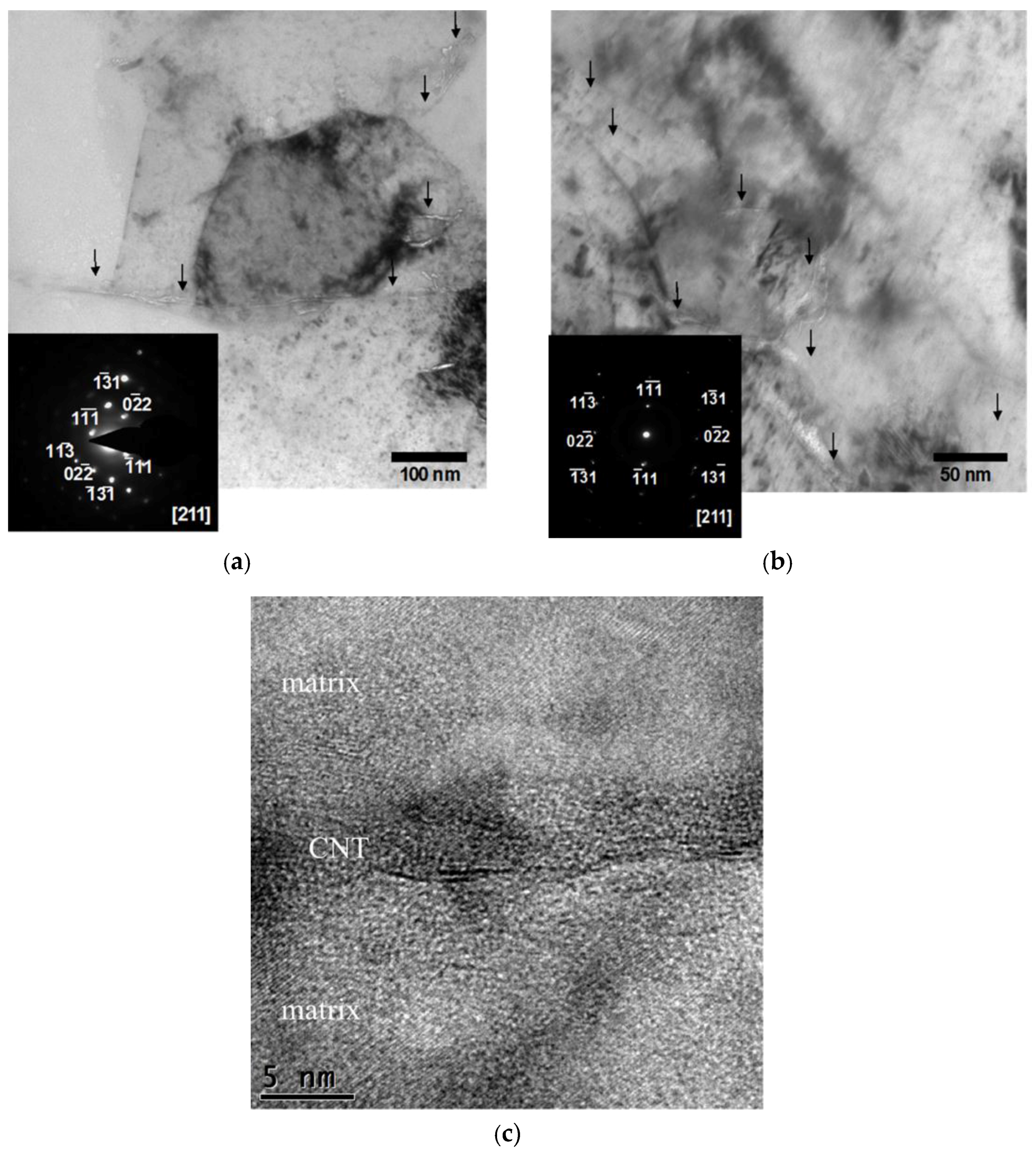
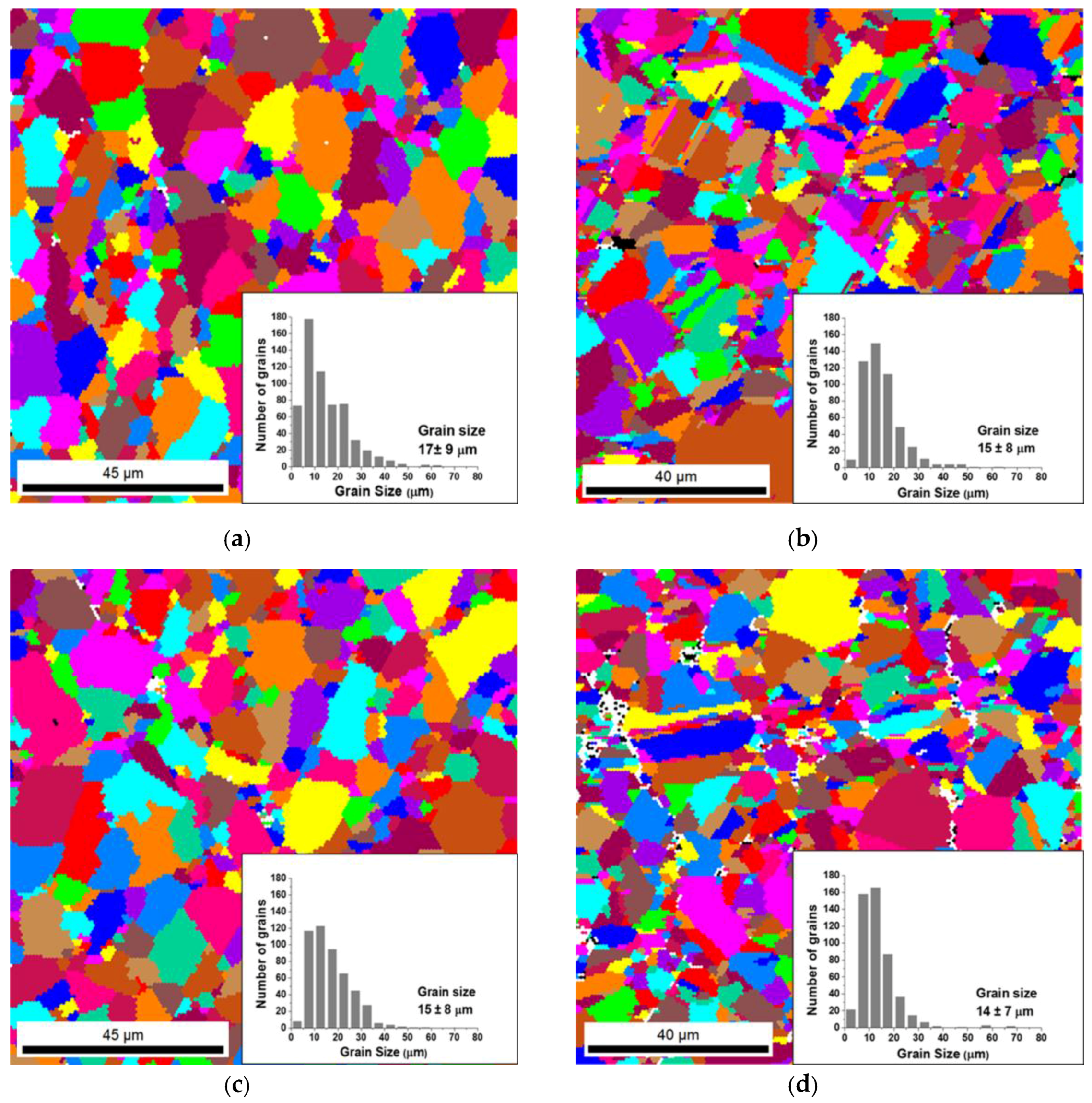
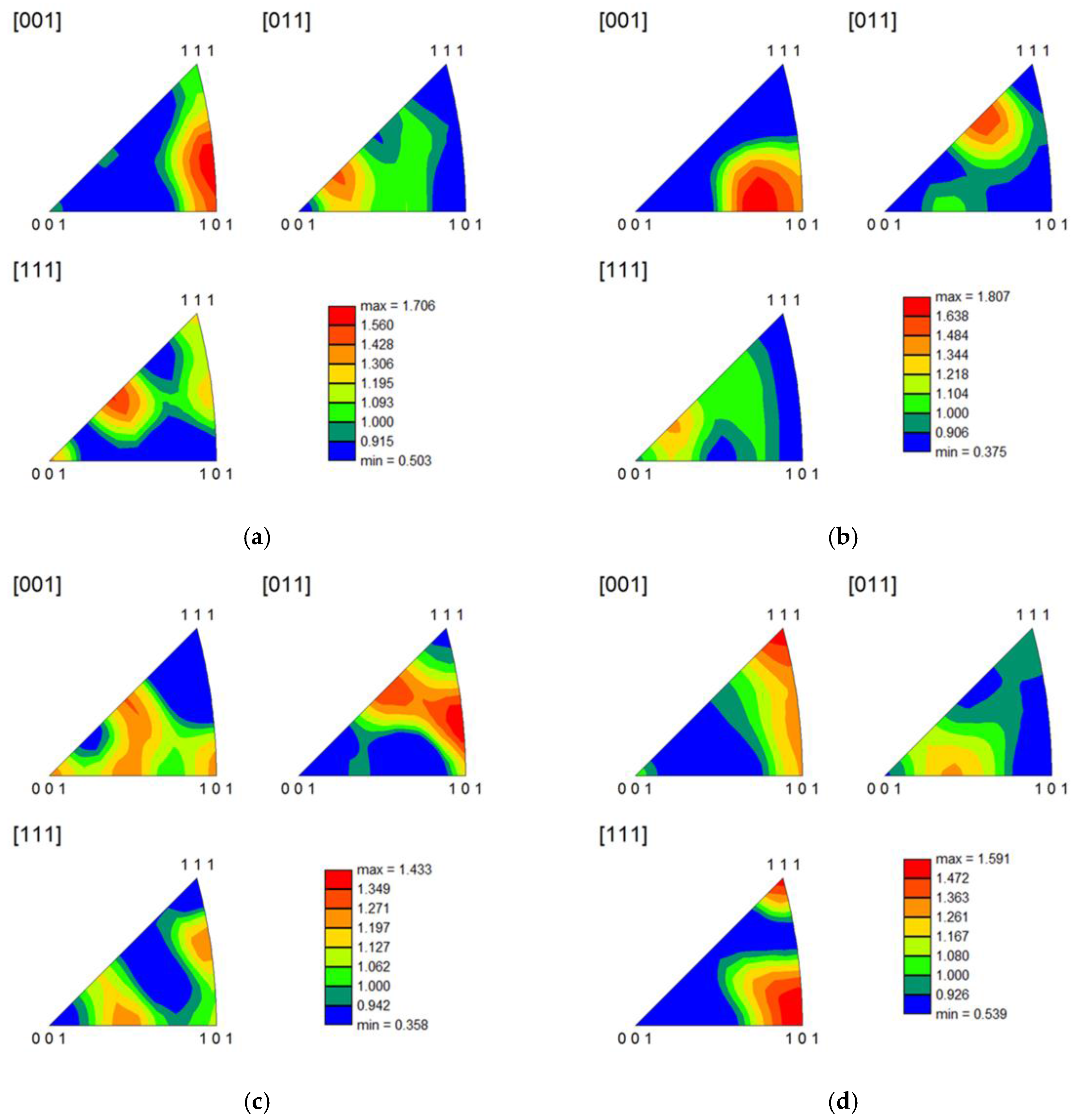
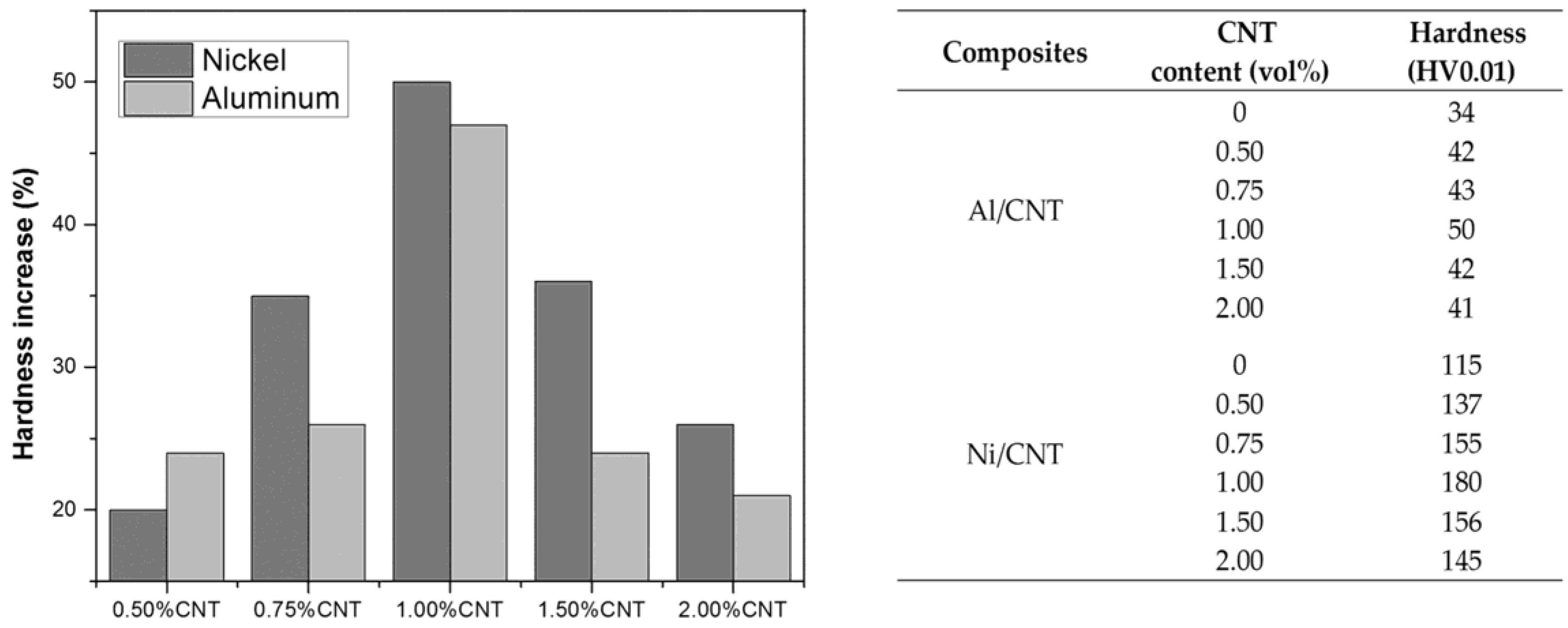
| Composites | CNT Content (vol %) | Porosity and CNT Clusters (vol %) | Maximum Size of CNT Clusters (μm) | Average Grain Size (μm) |
|---|---|---|---|---|
| Al/CNT | 0 | 1.00 1 | - | 17 |
| 0.50 | 4.88 | 89 | 16 | |
| 0.75 | 6.53 | 102 | 15 | |
| 1.00 | 5.95 | 78 | 16 | |
| 1.50 | 7.38 | 177 | 16 | |
| Ni/CNT | 0 | 1.05 1 | - | 15 |
| 0.50 | 3.22 | 83 | 14 | |
| 0.75 | 3.96 | 155 | 13 | |
| 1.00 | 6.67 | 137 | 14 | |
| 1.50 | 12.47 | 310 | 16 |
© 2017 by the authors. Licensee MDPI, Basel, Switzerland. This article is an open access article distributed under the terms and conditions of the Creative Commons Attribution (CC BY) license (http://creativecommons.org/licenses/by/4.0/).
Share and Cite
Simões, S.; Viana, F.; Reis, M.A.L.; Vieira, M.F. Aluminum and Nickel Matrix Composites Reinforced by CNTs: Dispersion/Mixture by Ultrasonication. Metals 2017, 7, 279. https://doi.org/10.3390/met7070279
Simões S, Viana F, Reis MAL, Vieira MF. Aluminum and Nickel Matrix Composites Reinforced by CNTs: Dispersion/Mixture by Ultrasonication. Metals. 2017; 7(7):279. https://doi.org/10.3390/met7070279
Chicago/Turabian StyleSimões, Sónia, Filomena Viana, Marcos A. L. Reis, and Manuel F. Vieira. 2017. "Aluminum and Nickel Matrix Composites Reinforced by CNTs: Dispersion/Mixture by Ultrasonication" Metals 7, no. 7: 279. https://doi.org/10.3390/met7070279





